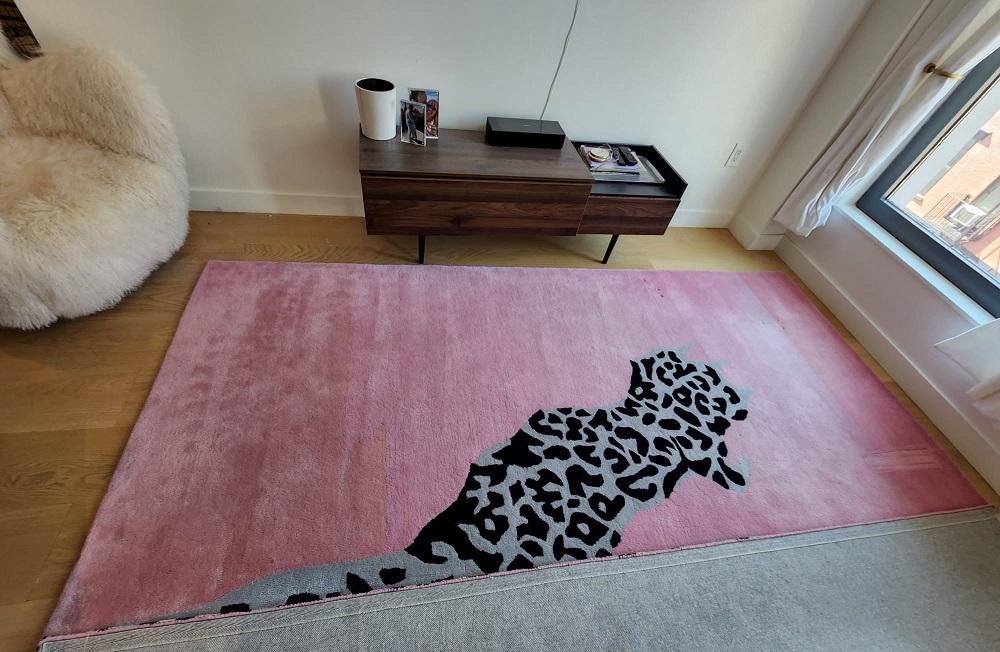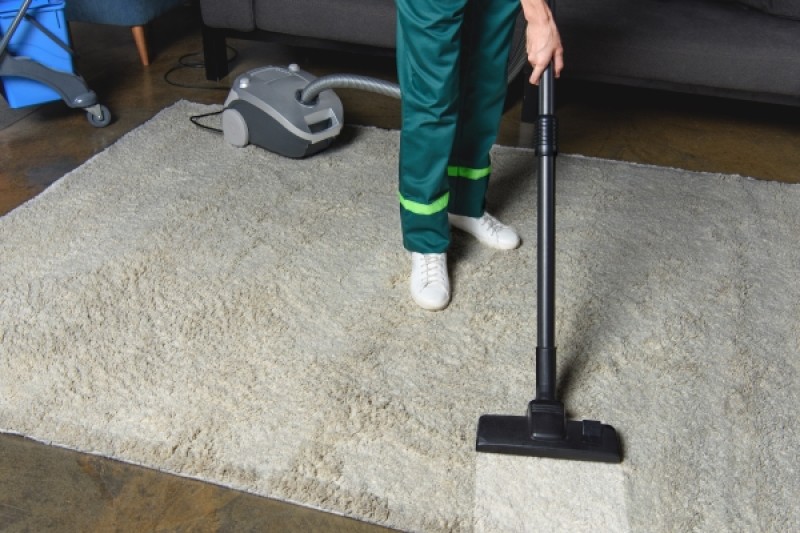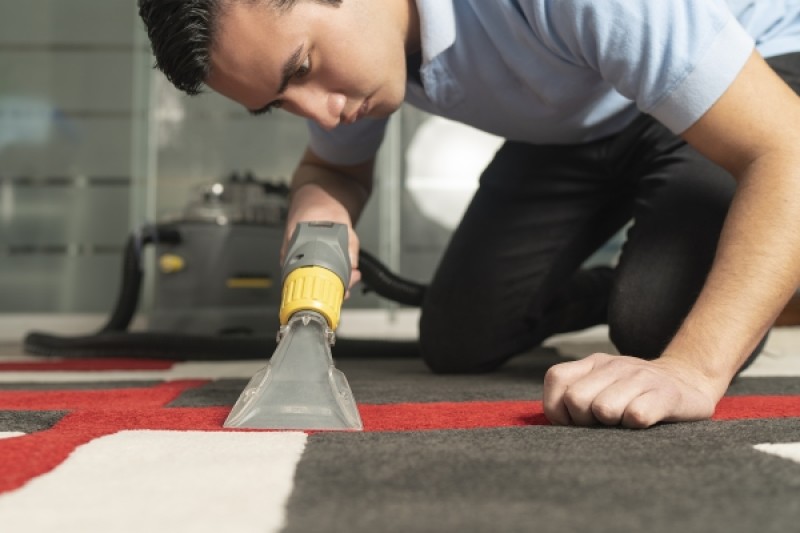Stains can be a frustrating and unsightly problem, especially when they seem to become permanent and impossible to remove. We all have had at least one piece of garment ruined by permanent stains. Stubborn stains are even worse on carpets and upholstery because these household items are more expensive and difficult to replace, unlike a T-shirt or a blouse. Whether it's on your carpet, furniture, or other upholstery, stains can be a challenge to deal with. But have you ever wondered why some stains seem to become permanent while others can be easily removed?
As a carpet cleaning service, we have seen lots of permanent stains in our activity and since they are permanent, nothing can be done to remove them. Not even the best carpet cleaning solution can remove certain stains. Let’s find out why some stains become permanent and how to prevent them!
Understanding the Nature of Stains
Understanding the nature of stains is paramount for maintaining the pristine condition of carpets and upholstery. Stains can vary widely, from common spills like coffee or wine to more complex issues like pet stains or ink. The composition of the stain and the type of fabric it affects are critical considerations for effective removal. Swift action Ais often necessary to prevent stains from settling deeply into fibers.
Tailoring cleaning methods to the specific stain and fabric is essential, ensuring that the cleaning agents used are both effective and gentle. Professional upholstery services can provide specialized solutions, ensuring that stains are treated with precision, and preserving the beauty and longevity of carpets.
What Causes Stains to Become Permanent?
Stains become permanent on carpet and upholstery when their composition interacts with the fibers, leading to deep penetration and setting. Factors such as high temperature, inappropriate cleaning agents, and the nature of the stain, whether organic or synthetic, contribute to the permanence. There are several causes of stains that never go off:
High temperature
Both fabrics in carpets/upholstery and colored compounds are fairly large molecules. These molecules tend to interact non-covalently, which means no chemical bonds are created. Such interactions between molecules are reversible and detergent will generally be able to separate staining substances from fibers. However, several factors can determine those staining molecules to covalently bind to the fabric, and heat is one of them. Couch steam cleaning, meaning the application of hot steam (not hot water extraction) while good for sanitization and killing dust mites, for instance, is not recommended for stained upholstery due to the high temperature of the steam.
Similarly, you should only use the dryer for clothes if you are sure a stain has been removed. Once the bond between molecules becomes covalent, there is nothing you can do to break the bond without breaking the bonds of the fabric, too.
Allowing the Stain to Settle
The longer a stain is left untreated, the less likely it is to be removed. First, a spill will stay on the surface of the fabric, but when allowed to sit, it will start to react with the fabric and change its color. Treating stains fast is important if you want to prevent them from becoming permanent. You generally don't want to leave a stain untreated for more than a week. Any time after this, removing the stain becomes harder. After years, it will most likely be permanent unless the fabric is especially forgiving like microfiber.
Chemical Reactions
Just as untreated stains can become permanent over time, the chemical makeup of certain substances like bleach and stomach acids from vomit plays a crucial role in the permanency of stains. Bleach, an agent designed to remove color, can quickly cause irreversible color loss in fabrics due to its strong oxidizing properties. On the other hand, the acidic nature of vomit can corrode fabric dyes, leading to stains that set if not immediately addressed.
Type of fibers
Some fibers are more prone to permanent stains than others. Fabrics like cotton and linen tend to hold on to stains. Yet, other natural fibers, like wool, are more resistant to stains. Wool contains lanolin, a natural oil that repels liquids. Many synthetic fibers are built with stain protection, such as polyester. Fabrics with a texture also tend to retain stains less compared to fabric with a luster. Microfiber, for example, which has a smooth texture and is make from polyester is an incredibly easy fiber to clean, and does not cling to stains.
Rubbing
When treating stains, its important to avoid rubbing the stain. The friction generated during rubbing may drive the stain deeper into the fibers, making it more challenging to remove. Additionally, aggressive rubbing can weaken the fabric, causing it to fray or pill. To avoid exacerbating the situation, it's essential to blot stains gently with a clean cloth and employ appropriate cleaning techniques for specific stain types and fabrics.
Types of Stains
Certain types of stains, especially on carpets and upholstery, can become permanent due to various factors.
Organic Stains / Food and Drink Stains
Stains like those from food or beverages can typically be removed if treated within a reasonable time. Just don't wait too long
Organic Oil-Based Stains
Generally harder to clean regardless of how long they ahve been untreated, yet if cleaned within 1 month, there is a high likelihood it will be removed. After 3 months, chances are reducing quickly.
POG (Paint Oil Grease) Stains
How are grease stains permanent, and similar substances? These stains are especially difficult as these substances naturally repel water. Therefore water-based cleaning methods cannot be used. Solvents must be used which are generally harsher on the fabrics and can can't be used on all textiles. Sometimes, full extraction cannot even be done with the correct chemicals and equipment due to damaged fabric fibers. This is why you should always put down a painter's tarp on the carpet when painting and if any contrators work in your house, they must put down construction paper. We have seen many instances where work-men trail grease in dirt throughout the house from their boots
Clothing Dye / Dye Transfer
Sometimes dye from your blue jeans will transfer to a fabric or leather couch cushion, often white as it is most noticeable. There are ways to remove this dye transfer but if it has been there too long, it may be permenant.
Improper Cleaning
Improper cleaning methods or the use of inappropriate cleaning agents can exacerbate the permanent stains, making them more challenging to remove. Oftentimes, as professional carpet cleaners in the field, we come across homeowners who have tried using dish soap or other household cleaners to treat fabric stains. They end of making the stain permanent. If you do attempt to treat a stain, use fabric stain removers, nothing else!
Bleach Stains
Are bleach stains permanent? This question arises because bleach does not create a traditional stain but rather removes dye from fabrics, leaving lighter or white areas. These changes are permanent since the fabric's original dye molecules are destroyed, not merely covered or added to. Unlike stains from substances like oil or coffee, which can often be removed with the right cleaning agents, bleach stains signify a loss of color that cannot be reversed through cleaning. The best approach to dealing with bleach stains is prevention and careful use, but if discoloration occurs, recoloring the fabric with dye is a possible, though challenging, solution.
What Kinds of Stains Tend to Become Permanent?
The substance causing the stain has a significant impact on the ability to remove it. Especially when dealing with substances lіke red wine, coffee, or oil-based spills. Some staining agents are more powerful than others, and these include: pets or food, which may set if not promptly addressed, while synthetic materials can retain certain dyes stubbornly. We have provided basic methods to remove such types of stains, but professional stain removal is always the best.
Ink
Ink stains are not easy to tackle due to the high concentration of pigments and other coloring chemicals. The pigments in ink can bond deeply, making removal challenging. With this type of stain, a fast reaction is critical if you want to prevent ink stains from setting permanently, preserving the overall appearance and lifespan of carpets and upholstery.
How to remove an ink stain
- Combine a solution of one tablespoon of white vinegar and ⅔ cup of rubbing alcohol.
- Dip a clean cloth into the solution and blot the stain.
- WARNING: Don’t rub because it will only spread it further.
- However, for optimal results, consider seeking professional service, as homemade methods may have limitations.
Mud
Mud stains are difficult to treat because mud easily binds to fabric fibers. Mud particles are larger and stick better to fabric than other types of dirt. Attempting to clean mud stains without proper techniques may spread the dirt or set it further into the fabric.
To remove a mud stain
- Allow the dirt to dry. Rub off the excess and vacuum any loose pieces.
- Mix two cups of water and one tablespoon of liquid soap.
- Using a clean cloth, apply the solution to the stain.
- Blot dry. Repeat as required.
- However, it is advisable to seek professional services for a thorough and reliable mud stain cleaning.
Blood
Blood allowed to dry on the fabric will oxidize and turn into a dark brown. Blood stains should be allowed to soak for several hours as this will help to break up the stain. Always remember to use cold water with blood stains, as high temperatures will “cook” the protein in the blood into the fabric and make the stain permanent.
How to remove dried-in-blood stains?
- Remove any solid deposits using a knife or spoon.
- Apply a small amount of hydrogen peroxide.
- Leave it for five minutes and then spot it with a paper towel.
- Rub gently with a clean, wet microfiber fabric until the stain has gone.
- Rinse the spot with cold water until all the hydrogen peroxide has rinsed.
- While natural cleaning methods can be effective, it's crucial to consider professional services.
Mildew
Mildew stains can permanently damage carpets and upholstery. They are black or green spots with a pungent smell and must be treated with special anti-mold products because soap and water only do not kill the spores.
Process to remove mildew stains
- Use a vacuum cleaner to remove any loose residues.
- Then, make a solution of a cup of salt and lemon juice.
- Utilize a piece of cloth to clean the stain.
- Flush it thoroughly and allow it to dry in the sunlight.
- However, for comprehensive cleaning, professional services are recommended.
Curry
The yellow turmeric in curry is the culprit for the permanent nature of these stains. A fast reaction is vital for this type of stain. Remover excess curry spillage by scrapping and blotting the stain with dishwashing detergent immediately.
Ways to clean curry stains
- Mix two cups of cool water, one tablespoon of liquid soap, and one tablespoon of white vinegar.
- Using this mixture, sponge the spot caused with a clean cloth.
- Blot at the stain until it is absorbed.
- Repeat these steps, until the stain is removed from the upholstery.
- However, for stubborn or persistent stains, it is advisable to seek professional cleaning services.
Red Wine
Red wine stains on carpet and upholstery can become permanent due to the pigments and tannins present in the wine. If not promptly addressed, these stains may penetrate the fibers, making them challenging to remove. The porous nature of certain fabrics can exacerbate the permanence of red wine stains, emphasizing the importance of immediate and targeted upholstery cleaning methods to prevent lasting damage.
Remove wine stain from upholstery
- Spot the area with a clean dry towel to clean the remaining liquid. Do not scrub.
- Spray a small amount of carbonated water directly on the stain. Blot dry. Repeat as required.
- Mix ¼ cup of baking soda and ⅛ cup of water to form a mixture.
- Apply the mixture to the stain and allow it to sit for several hours until completely dry. Then Vacuum it off.
- For effective results, consider professional cleaning service alongside this natural method.
Water Stains
Even water can stain your carpets if spillages are not dried fast. This type of stain occurs when the water is high in minerals such as magnesium and calcium. Addressing water stains promptly with appropriate carpet cleaning methods is crucial to prevent their permanent and maintain the integrity of the fabrics.
Steps to remove water stains
- Vacuum the affected area to remove any dust.
- Next, take a bowl of warm water and add a few tablespoons of vinegar to it.
- Then take a clean cloth and use it to dab the water spot.
- After wiping it enough times, take another clean cloth and soak it with the solution.
- Now use this cloth to pat the water stain spot on your upholstery. Leave it on the stain spot for about 15 minutes.
- Repeat the same process, until the water stain spot disappears. Lastly, use a hairdryer to parch out your upholstery.
- For a comprehensive cleaning, it's recommended to engage the services of professionals.
Sharpie
Are you wondering how to get sharpie out of fabric? The solvent-based ink in Sharpie markers is designed for permanence as it is designed as a permanent marker. This makes these stains particularly challenging to remove. The ink quickly bonds with fabric or other surfaces due to its quick-drying, solvent-based formula, leaving a durable mark that is resistant to most conventional cleaning methods. Immediate action is essential when dealing with Sharpie stains to prevent the ink from setting deeply.
Ways to clean Sharpie stains
- Apply rubbing alcohol or an alcohol-based hand sanitizer to a clean cloth. Gently dab the stained area with the cloth, allowing the alcohol to penetrate the ink.
- Blot the stain with the alcohol-soaked cloth, carefully lifting the ink from the surface. Avoid rubbing to prevent spreading the stain further.
- Repeat the process with fresh alcohol and a clean section of the cloth until the stain fades.
- If the stain persists, consider using a commercial ink remover specifically designed for permanent marker stains, following the manufacturer's instructions.
Tea/Coffee Stains
The tannins present in tea and coffee make these stains particularly stubborn, as they bond with the fibers of fabrics or the surfaces they come into contact with. These stains are best addressed immediately, as the longer they sit, the more difficult they become to remove, with the risk of becoming permanent over time.
Ways to clean Tea/Coffee stains:
- Immediately blot up as much of the spill as possible with a clean, dry cloth to minimize absorption.
- Mix a solution of one part white vinegar and two parts cool water. Apply this mixture to the stain with a clean cloth, dabbing gently to treat the area without spreading the stain.
- Rinse the area with cool water and blot dry. If the stain remains, apply a small amount of liquid laundry detergent directly to the stain and gently rub it in with your fingers or a soft brush.
- Wash the fabric as usual, following the care instructions, and check that the stain is gone before drying. For carpets and upholstery, after treating with the vinegar solution and detergent, blot with cool water and then blot dry.
- For persistent or older stains, professional cleaning services may have more effective methods and specialized products to remove them completely.
Vomit Stains
Are vomit stains permanent? The complexity of vomit, combining stomach acids and food particles, makes these stains a concern for permanence on fabrics and carpets. Immediate action is key to preventing these stains from setting and becoming harder to remove. The acidic nature of vomit can damage fibers and colors if not addressed quickly.
Ways to clean Vomit stains:
- Start by scraping off any solids with a spoon or a dull knife to prevent further embedding into the fabric.
- Rinse the area with cold water, then apply a mixture of one tablespoon of dish detergent with two cups of warm water. Blot the stain with this solution using a clean cloth or sponge, avoiding rubbing to prevent the stain from spreading.
- For fabrics, use an enzymatic cleaner that specifically targets organic stains. Apply according to the product's instructions, then launder the item following the garment's care label
How to Avoid Permanent Stains
Any experienced couch cleaner or mattress cleaner will tell you that stains do not need to become permanent, and there are a few tricks you can use:
Immediate Action for Stain Removal
Clean stains as soon as possible to prevent them from becoming permanent. Prompt action minimizes the absorption of the stain into fabrics or surfaces, increasing the likelihood of successful removal. Quick responses also reduce the need for aggressive couch cleaning methods, preserving the integrity of the material.
Opt for Gentle Treatment
These factors will determine whether the staining substances permanently adhere to fabrics, making stain removal very difficult or impossible. Therefore, opting for professional carpet and upholstery cleaning services, ensuring expert handling without risking further damage.
Tailoring Cleaning Agents to Each Stain
An NY carpet cleaning expert will be able to use the right cleaning solution for each type of stain, depending on the substance causing it and the type of fiber. However, using the wrong cleaning agent may worsen the situation. Opting for professional cleaning services ensures expertise in identifying and treating various stains, reducing the risk of damage, and ensuring optimal stain removal.
In conclusion, stains become permanent due to their interaction with specific fabric fibers and improper cleaning methods. To avoid this, it's crucial to understand the nature of stains, select appropriate cleaning agents, and act promptly. For professional and effective stain removal, consider the expertise of rug cleaning NY services like PristineGreen Upholstery and Carpet Cleaning. Our specialized approach ensures the right treatment for different stains, preserving the beauty of your area rugs and sofas. Take the proactive step towards stain-free living and trust PristineGreen for top-notch professional cleaning services.
Frequently Asked Questions
Both fabrics in carpets/upholstery and colored compounds are fairly large molecules. These molecules tend to interact non-covalently, which means no chemical bonds are created. Such interactions between molecules are reversible and detergent will generally be able to separate staining substances from fibers. However, several factors can determine those staining molecules to covalently bind to the fabric, and heat is one of them.
Mud stains are difficult to treat because mud easily binds to fabric fibers. Mud particles are larger and stick better to fabric than other types of dirt.
Even water can stain your carpets if spillages are not dried fast. This type of stain occurs when the water is high in minerals such as magnesium and calcium
Some fibers are more prone to permanent stains than others. Fabrics like cotton and linen tend to hold on to stains. Yet, other natural fibers, like wool, are more resistant to stains. Wool contains lanolin, a natural oil that repels liquids
Stains become permanent on carpet and upholstery when their composition interacts with the fibers, leading to deep penetration and setting
Factors such as high temperature, inappropriate cleaning agents, and the nature of the stain, whether organic or synthetic, contribute to the permanence.
The friction generated during rubbing may drive the stain deeper into the fibers, making it more challenging to remove.
Clean stains as soon as possible to prevent them from becoming permanent. Prompt action minimizes the absorption of the stain into fabrics or surfaces, increasing the likelihood of successful removal.
An NY carpet cleaning expert will be able to use the right cleaning solution for each type of stain, depending on the substance causing it and the type of fiber. However, using the wrong cleaning agent may worsen the situation.
Ink stains are not easy to tackle due to the high concentration of pigments and other coloring chemicals. The pigments in ink can bond deeply, making removal challenging.




